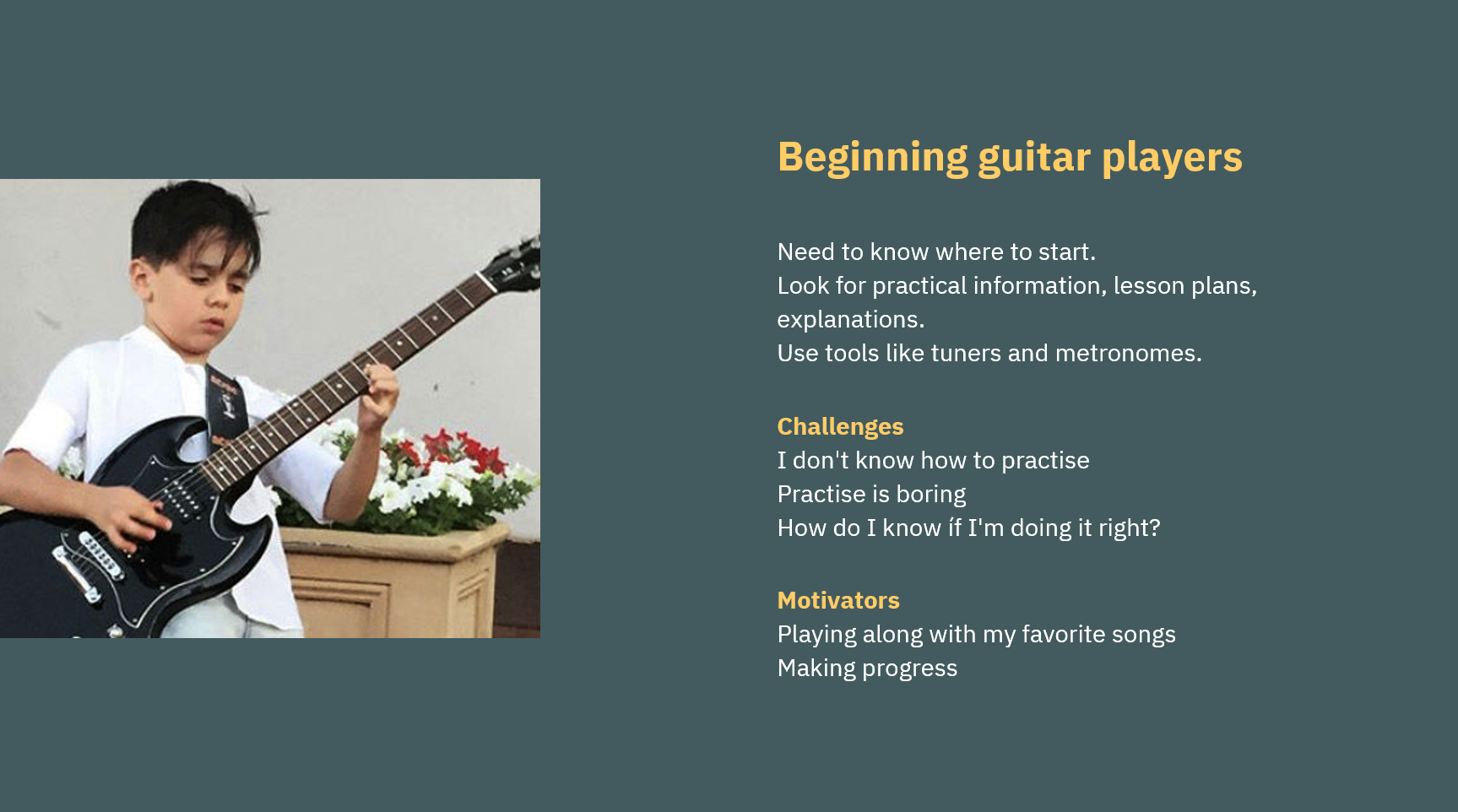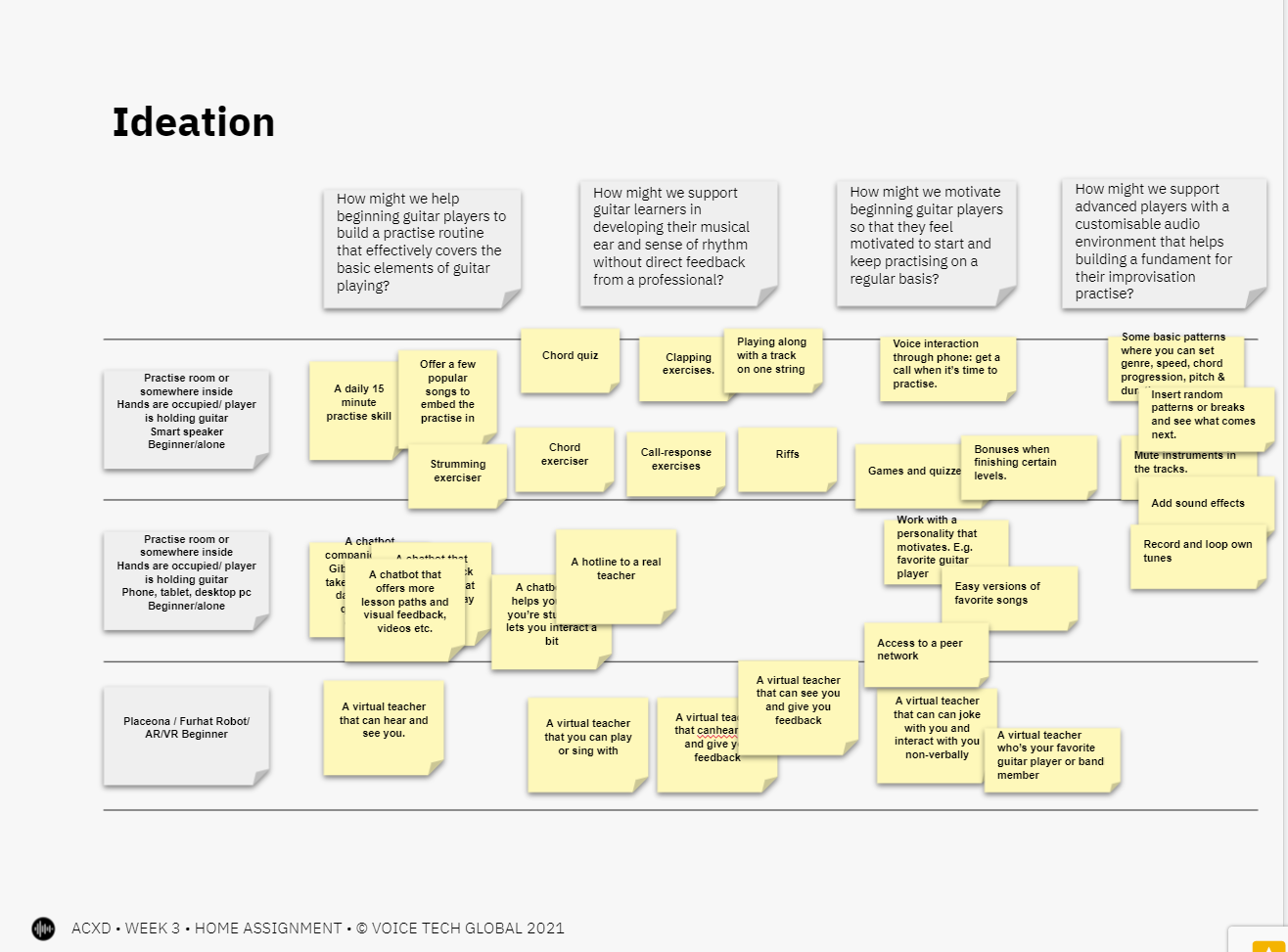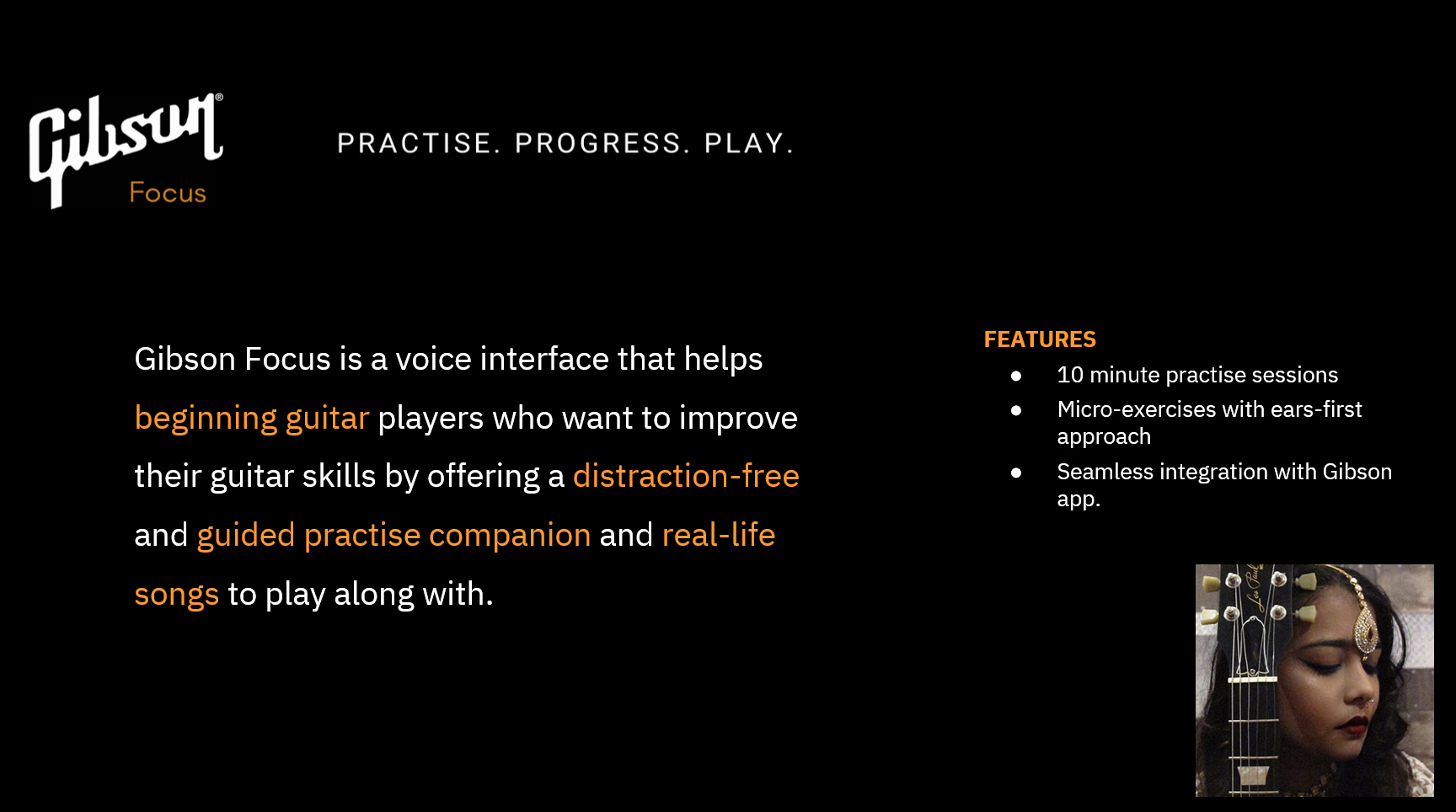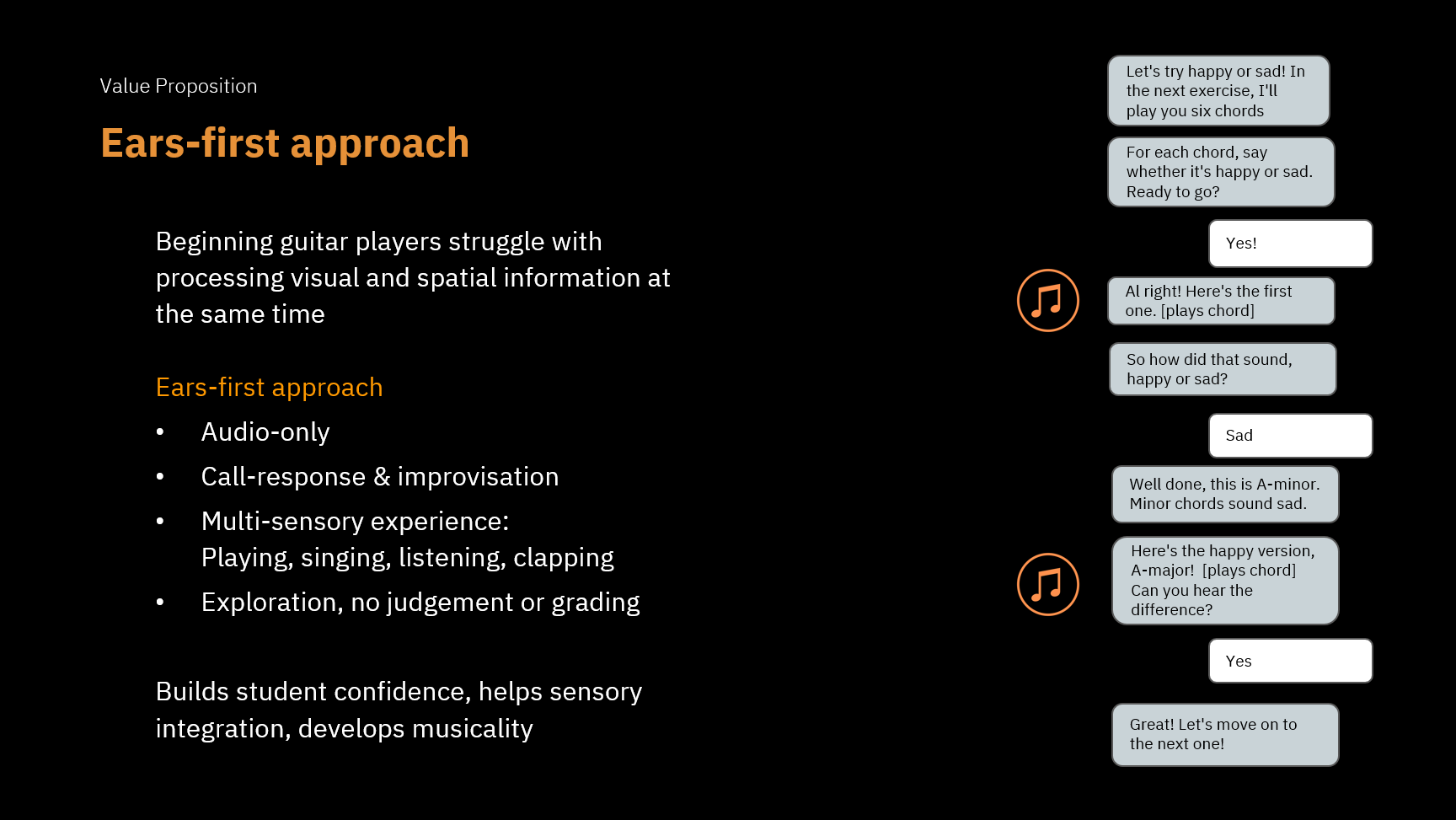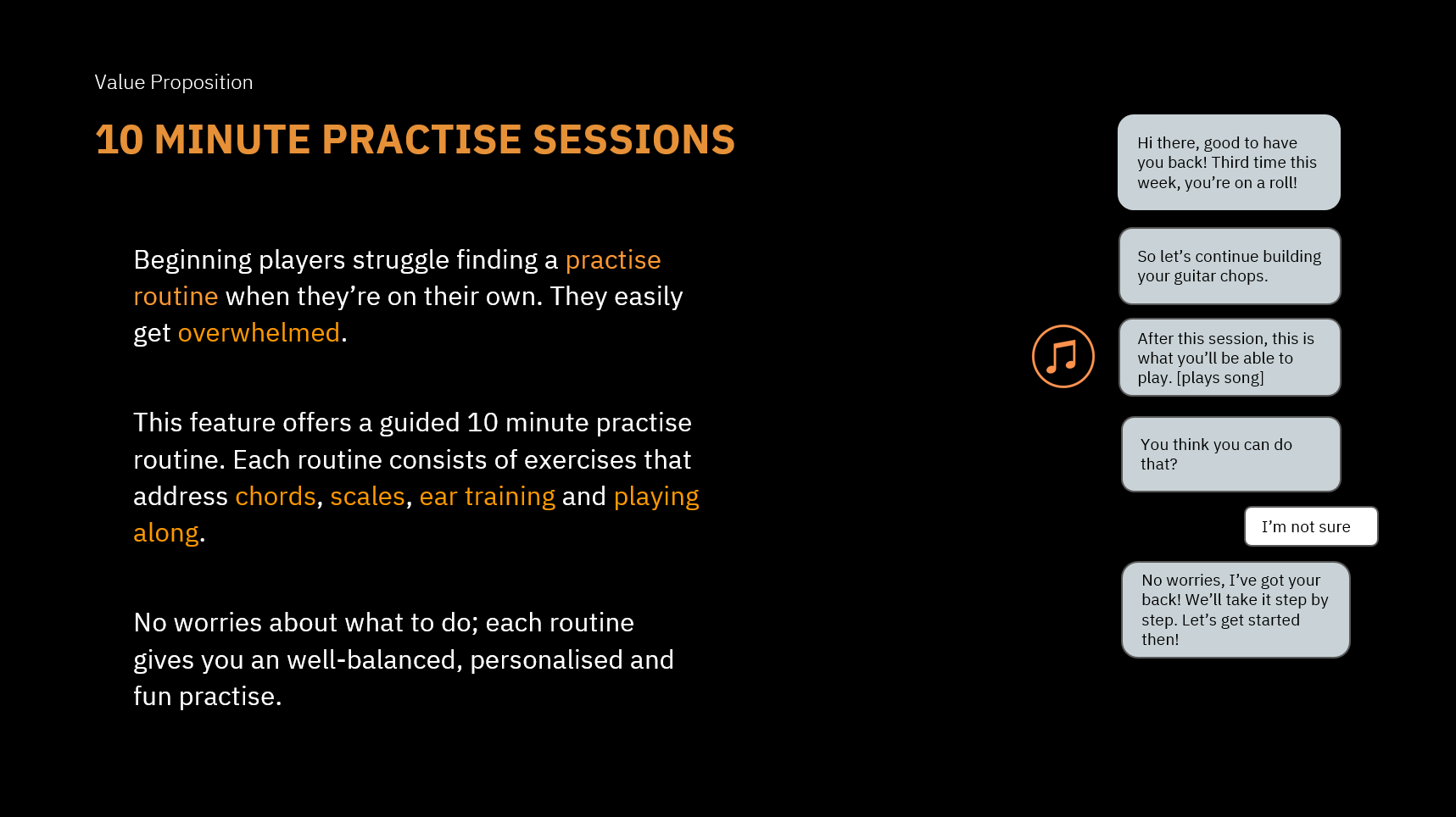Voice Tech Global – Advanced Conversation Experience Design
GIBSON FOCUS
A fictional use case for a guided, audio-first and distraction-free guitar-learning experience.
In this 6-week course by Voice Tech Global, I created a conversational concept for a fictional use case for Gibson guitars. Please note that Gibson wasn’t involved.
Personal learning goals
- Deepen my knowledge of concept design
- Learn more about inclusive design
- Commit to designing a conversational concept to the point that it can be built
Skills that I used
- Value proposition canvas & jobs to be done framework
- User interviews & user journey mapping
- Personality design & conversation design
- Design for inclusivity & accessibility
- Multimodal design
Project Brief
Project brief
Gibson is a world famous guitar brand, with many well-known and well-loved players. In this fictional use case, my client wanted to explore the possibilities of an in-app voice assistent for their succesful mobile app. Additionally, they were curious about opportunities in the smart speaker ecosystem.

User research and concept design
Interview users
I interviewed guitar players and researched online guitar communities to gain insights in their playing habits, if and how they practised, what motivated them and which challenges they faced. I interviewed both beginning and intermediate guitar players. For time’s sake, I limited the scope to beginners.
Here’s an Interview guide I created for my research.
Identify jobs, pains and gains
From my player interviews, I distilled their main tasks and jobs, the challenges that they encounter and their motivators.
Learning to play an instrument requires a lot of new skills: getting to know your instrument, learning chords and fingering, and developing a sense of rhythm and musicality. No wonder that the biggest challenges for beginners are where to start…and how to keep going!
Spot opportunities and ideate
Next, I transferred my user jobs, pains and gains to ‘How might we’ statements. This is a great way to identify opportunities and start brainstorming for ideas that are grounded in your user research.
I’ve included several canvases on the left, click on the navigation arrow to see them all.
Value proposition: Gibson Focus
Based on my user research, I zoomed in on three of the main pains: sensory overload, lack of motivation and lack of structure. This resulted in the following value proposition:
Gibson Focus, a voice interface that helps beginning guitar players by offering a distraction-free and guided practise companion and real-life songs to play along with.
Ears-first approach
I opted for an ears-first approach with a combination of non-western music training techniques to allow for a distraction-free and fun learning experience.
I’ve taken inspiration from the traditions of West-African drumming and Indian classical music, which both make use of aural teaching, call-response, imitation & emulation and improvisation.
(Click on the slide navigation in the image to see more slides).
User journey and multi-modal design
Gibson Focus can be used both stand alone and as voice interface on the existing Gibson mobile app. The user journeys for both scenarios look like this.


persona and personality design
For this experience, I designed three distinct personas. Even though large parts of the voice experience will be excercises, rather than dialog, it’s still important to design personas. Not only do they provide a basis for a consistent user experience, they also help bring out the different aspects the experience!
The default persona is the down-to-earth, helping-you-to-stay-focused core persona. Hero personas increase motivation and can be used as bonuses when you complete a goal or unlock a playing level. Young player personas are especially meant for children, and may be used in combination with easier excercises.

Default persona
Name
Jim (after Jim DeCola, Gibson’s Master Luthier)
Mission & Conversational goals
A guitar tech at Gibson whose job it is to help you concentrate and practise those guitar skills that need repetition, stamina and focus. Jim’s not afraid to give you the proverbial kick and nudge when you need it!
Key personality descriptors
Patient, agreeable, down-to-earth, knowledgeable, no-nonsense
Character that shares these descriptors
Teacher, advanced player

Hero personas
Students can choose from a selection of their favorite guitar players from a variety of genres, like the Edge or Slash. These famous players will be asked to record the excercises in their own voice, and of course, with their own guitar!
Mission & Conversational goals
The key persona characteristics will stay the same as for the default persona. After all, it remains a teaching experience.
But hero personas bring more: they’ll give you something to aspire to and making you ultra-motivated to practise more and get that favorite riff!

Young player personas
Younger players can choose one of the young talents from Gibson’s Global Mentoring programme.
Mission & Conversational goals
Contrary to Jim, the young player personas are more of a friend than a teacher. They’re great for jam sessions together. They connect with young players through jokes and sharing practise stories.
Key personality descriptors
Amicable, playful, challengeing without being overbearing, connecting.
Character that shares these descriptions
Friend, older sibling, social media influencer
CONVERSATION DESIGN
Because my main focus in this course was concept and experience design, I didn’t design full-blown conversational dialogs for this projects (go here if you want to see some dialog samples). Instead, I designed a welcome message plus variations and templates for conversational music mini-excercises. I do plan to elaborate on this in the near future for sure!


Future vision
Of course, a mobile app and a virtual teacher can be nice and handy. But for me, they’re just first steps. On our way to a truly immersive music experience. Because imagine….


